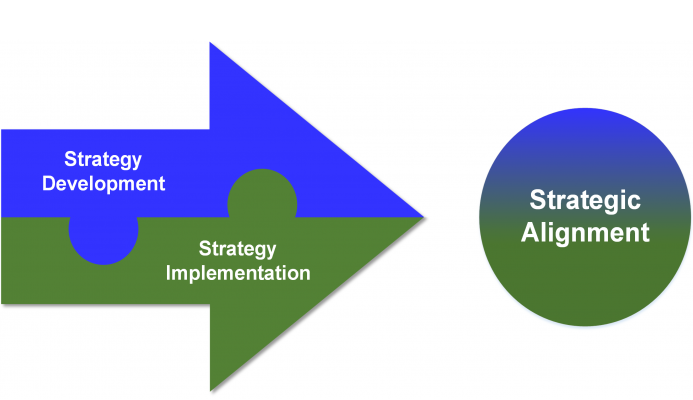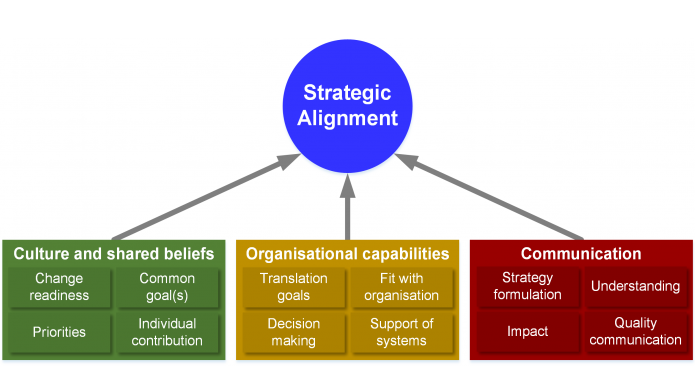Nowadays, organizations operate in a dynamic and fast changing environment which makes formulating a consistent strategy very challenging and executing that strategy even more difficult. More than half of organizations surveyed in previous economic studies indicated that they have not been successful at executing strategic initiatives. Moreover, a majority of organizations face problems when executing their strategic vision.
In an environment where competition and globalization of markets is intensifying, managing and surviving change becomes increasingly important. A business strategy determines the decisions and course of action that businesses take to achieve competitive advantage and is therefore crucial to survive change. Nonetheless, several economic studies indicated that many organizations fail to implement strategic alternatives. Therefore, it is important to know more about the reasons underlying the difficulties of organizations to reach strategic alignment.
Organizations develop and implement strategies to achieve (strategic) goals. The development of a strategy is about formulating what should be changed to evolve from the current situation to the desired future state. Strategy implementation is about translating the strategic plans into clear actions to execute the strategy. Strategic alignment is the ability to create a fit or synergy between the position of the organization within the environment (business) and the design of the appropriate business processes, resources and capabilities (IT) to support the execution. Strategic alignment cannot be reached when strategy development is considered to be a separate process from strategy implementation. Strategy development and strategy implementation are intertwined processes which both need to be successful for superior firm performance.

Strategic Alignment
The way organizations move from strategy development to strategy implementation is influenced by many factors. Consequently, strategic alignment is influenced by several factors which all contribute to the successful development and implementation of a strategy. We distinguish three categories in which several factors influencing strategic alignment are combined. How organizations manage the factors within these three categories determine whether they are able to reach strategic alignment or not. These three categories are:

Culture and shared beliefs, Organizational capabilities, Communication